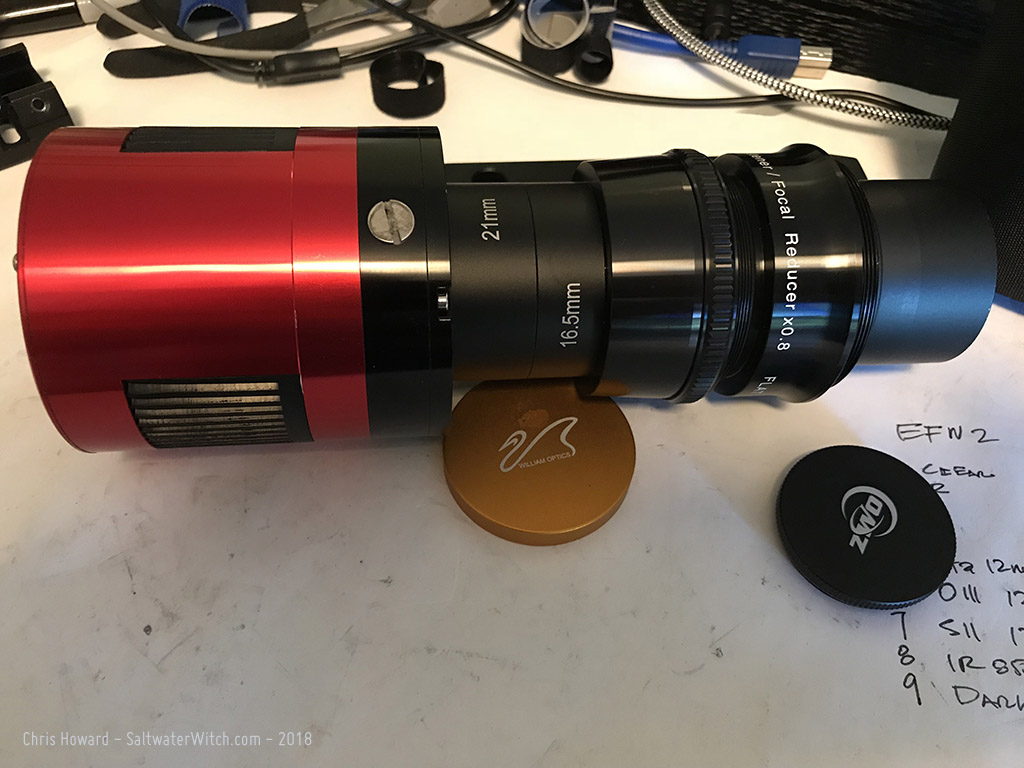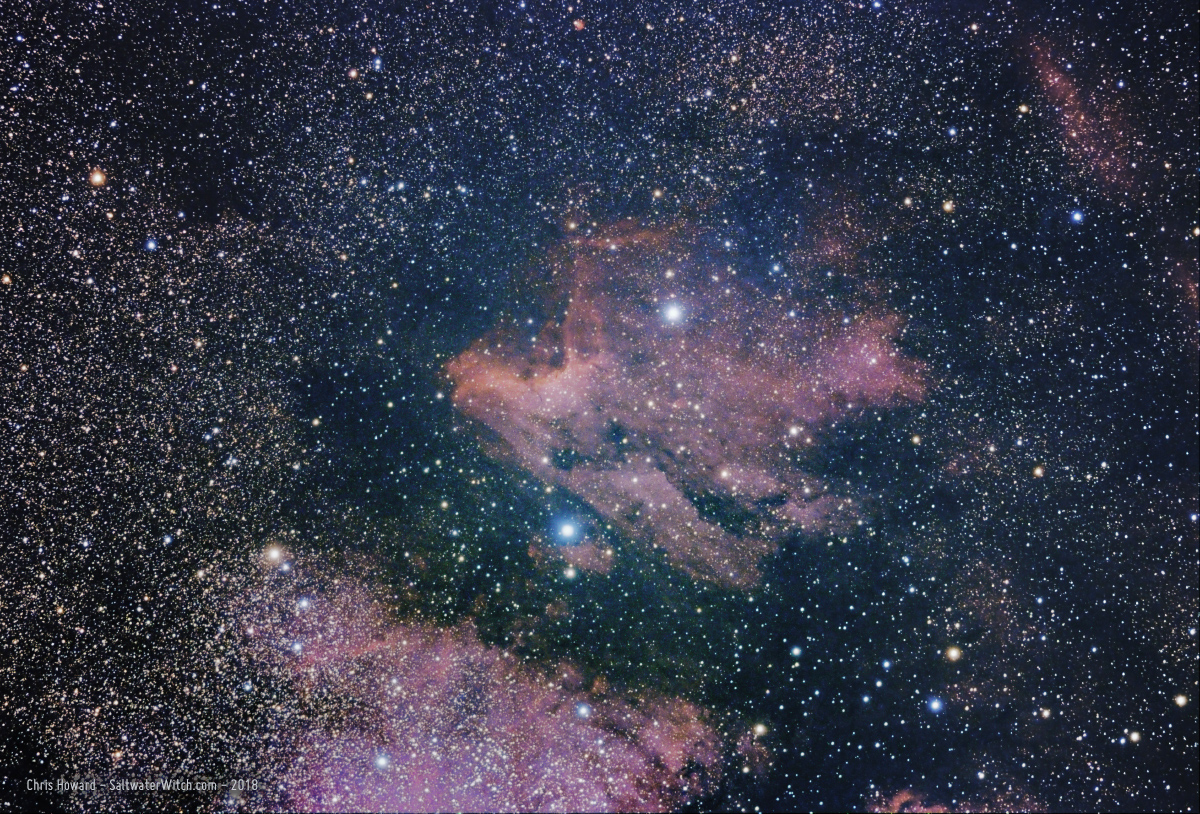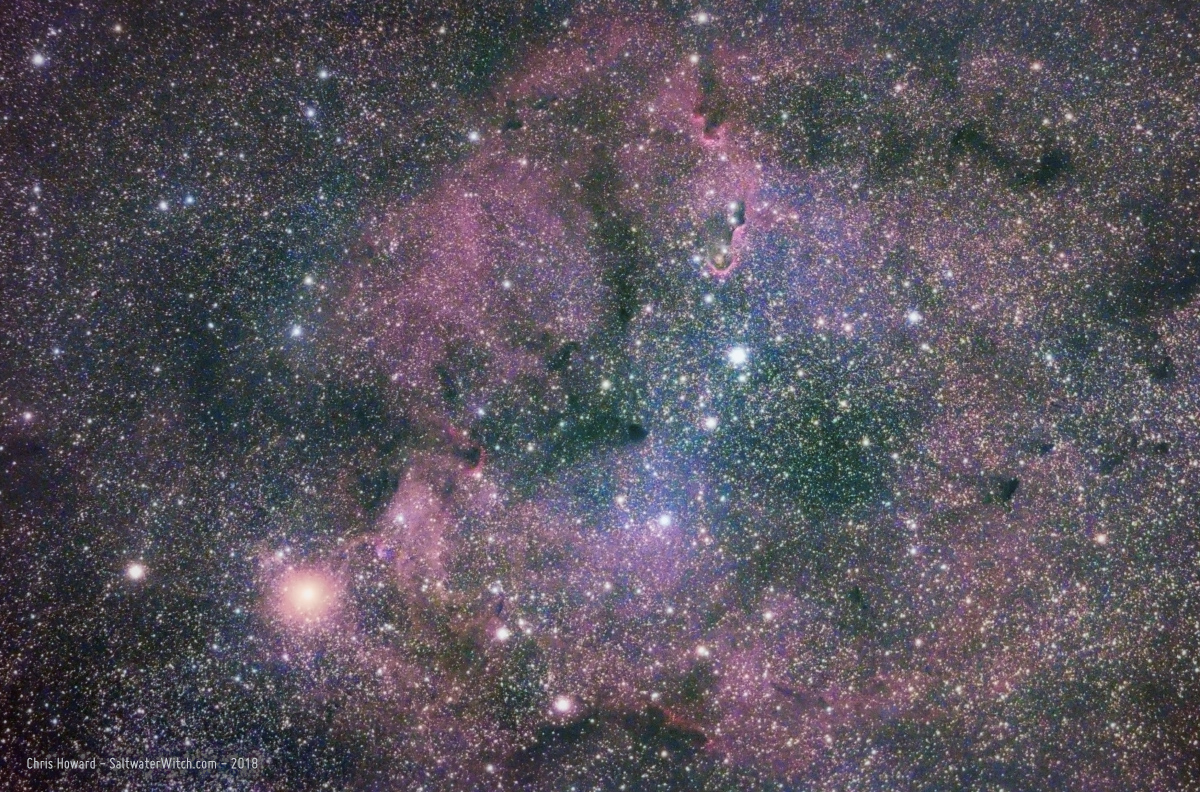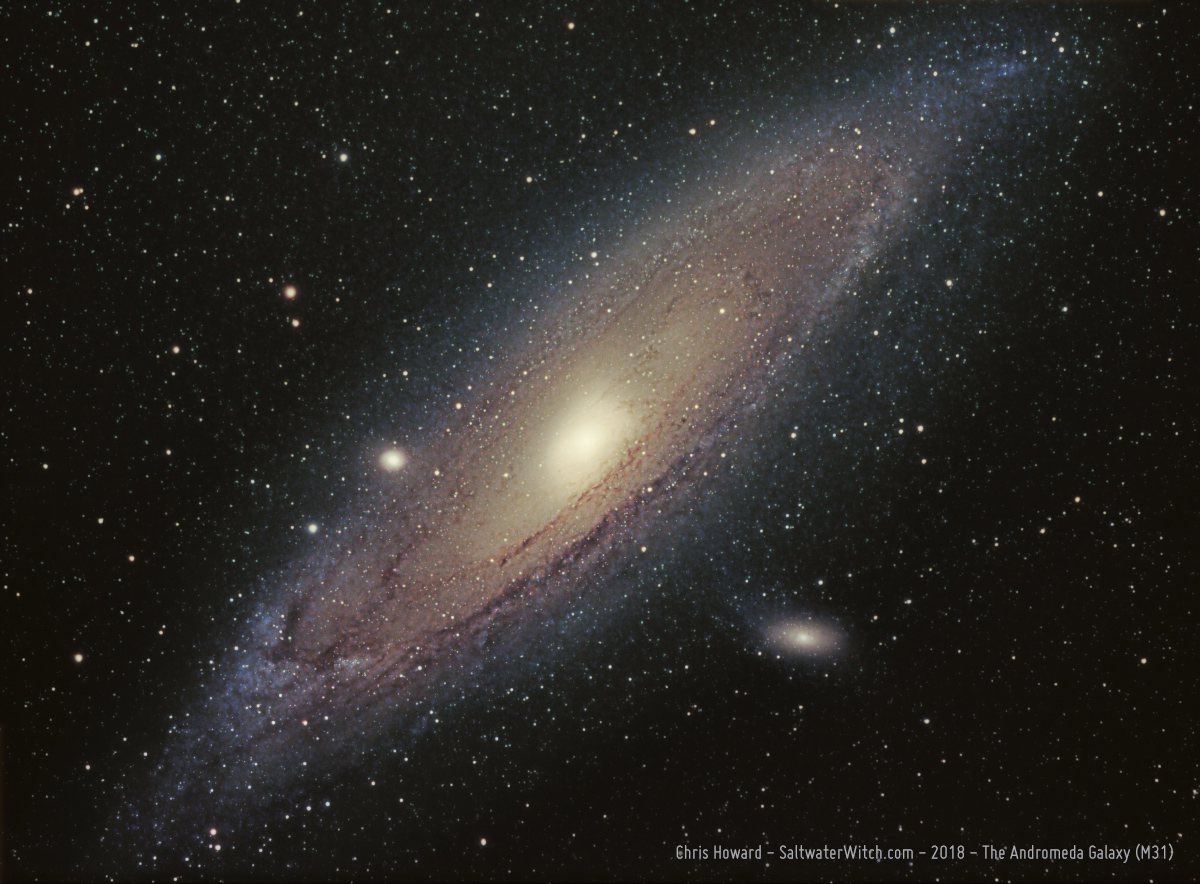Astro Session: July 9, 2018
July 9, 2018
 I recently bought the William Optics FLAT 6A II, and finally made it out under the stars to take some sub-exposures. I paired it with my GT-81 and ZWO ASI071MC color CMOS camera. The FLAT 6A II is a 0.8x reducer/field flattener; it's adjustable for different focal lengths, and so far, with my limited use, it appears to be quite a leap over the old William Optics F6-A I've used for a few years. The ASI071 has an APS-C sized sensor, and anyone with a large sensor astro camera or DSLR knows if you don't want field curvature with your refractor you need some sort of flattener. The FLAT6AII design makes it easy to dial in the correct distance for the scope you're using. The old reducer/flattener worked, but I had to test out a dozen different flattener to sensor distances, and still had to do some cropping and processing to fix the corners. This new FLAT 6AII provides a fairly flat field across the entire view. Equipment: William Optics GT-81 + FLAT 6A II 0.8x reducer f/4.7, ZWO ASI071MC-Cool color CMOS camera - gain 0 offset 8, ZWO ASI120MM-S Guide Cam + 130mm guide scope.
I recently bought the William Optics FLAT 6A II, and finally made it out under the stars to take some sub-exposures. I paired it with my GT-81 and ZWO ASI071MC color CMOS camera. The FLAT 6A II is a 0.8x reducer/field flattener; it's adjustable for different focal lengths, and so far, with my limited use, it appears to be quite a leap over the old William Optics F6-A I've used for a few years. The ASI071 has an APS-C sized sensor, and anyone with a large sensor astro camera or DSLR knows if you don't want field curvature with your refractor you need some sort of flattener. The FLAT6AII design makes it easy to dial in the correct distance for the scope you're using. The old reducer/flattener worked, but I had to test out a dozen different flattener to sensor distances, and still had to do some cropping and processing to fix the corners. This new FLAT 6AII provides a fairly flat field across the entire view. Equipment: William Optics GT-81 + FLAT 6A II 0.8x reducer f/4.7, ZWO ASI071MC-Cool color CMOS camera - gain 0 offset 8, ZWO ASI120MM-S Guide Cam + 130mm guide scope.
 Testing:
Testing:
With the GT81 and ASI071 I get a 3.54° x 2.35° field of view, and I can capture some big chunks of the night sky. Here are three from the last two nights: [1] the Pelican Nebula (IC 5070) and the edge of the North America Nebula (NGC7000) at the bottom, [2] IC 1396 nebula with the Elephant's Trunk at the top and the Garnet Star bottom left, and [3] M31, our galactic neighbor, the Andromeda Galaxy.
Pelican Nebula image info: ZWOASI071MC 39 x 240 second color subs stacked in DSS, processed in PSCC2018

IC 1396 region image info: ZWOASI071MC 21 x 300 second color subs stacked in DSS, processed in PSCC2018

The Andromeda Galaxy. The last time I photographed Andromeda (M31) was 2015, maybe fall of 2014? It's been a while. I was using a DSLR--that was the only camera I had, and I had it on a terribly-used Celestron CG-5 equatorial mount with some aftermarket RA/DEC motors. By "terribly-used" I mean you could drive a truck through the gear backlash. Even so, I still managed to get some decent 30-second exposures of Andromeda, Orion Nebula, and other big bright targets in the sky. Well, I'm back with our galactic neighbor, and with much better gear: 192 x 120-second sub-exposures stacked in DSS, processed in PSCC2018, ZWO ASI071MC camera at -10C, William Optics GT81 APO, iOptron CEM25P EQ mount.

